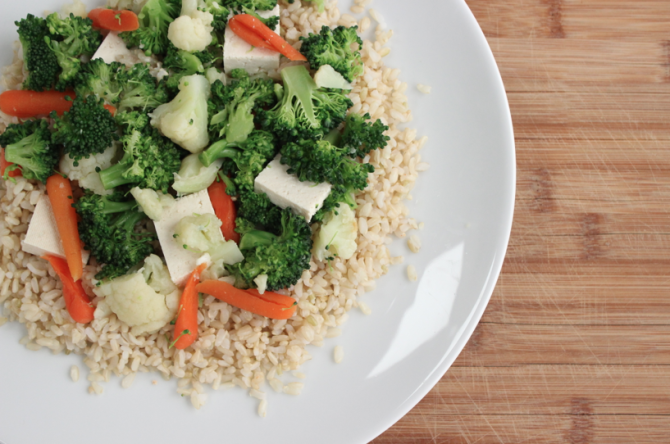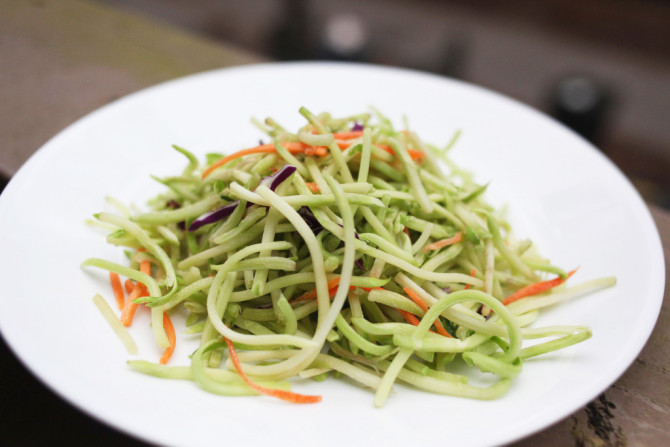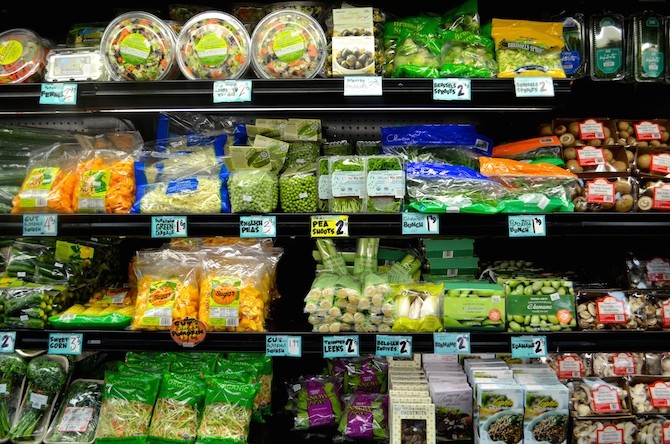It all started a few summers back when I was a first year counselor at sleep-away camp. I worked as a waitress the summer before, and was spoiled with the privilege of not following exactly what was being served at any given meal. I would often sneak some of the vegetarian meal after we cleaned up if there was extra, or I would snag an extra banana on a day that there were apples being served.
In prep for the summer that I was going to be a counselor, I was bummed thinking about the luxury of choosing my own meals that I would no longer have. I thought about giving up meat and specifying that I was vegetarian for the summer. Generally the vegetarian options were healthier and more of what I had gotten used to eating, but I also wasn’t ready to entirely eliminate meat from my diet, nor was I ready to abandon my childhood tastebuds and the chicken patties entirely.

Photo by Katherine Baker
So I started doing research, trying to find a valid dietary restriction to write on my paperwork for the summer to shamelessly get a little bit of everything when it came to all the options the mess hall had to offer. I sneakily wanted the option of tofu and veggies, but also wanted to be able to have the chicken noodle soup at Shabbat dinner.
Soon I found out that there was such a thing for what I was looking for. The perfect solution to my summer dilemma: flexitarianism. No, I didn’t make it up, though it took a lot of convincing to prove to my camp friends that it was a real thing.
A flexitarian is someone who normally eats meatless, but occasionally includes meat and fish in their diet. Seems like a vegetarian who can’t commit, but there’s more to the flexitarian diet. Since I started eating in such a way almost accidentally, I have found that flexitarianism is a way to ensure a balanced diet without neglecting any certain food sources or nutrients.

Photo by Kelly Logan
The flexitarian movement steers away from the meat-heavy diet that we’re all used to, and is focused more on a way of eating that includes whole grains, fruits, vegetables and legumes, as well as fish or meat a handful of times each week. It’s exactly how it sounds – flexible. A flexitarian can eat meat once a day or a little as once a week.
Flexitarianism is a balance between the popular American diet that includes more than 200 pounds of meat, poultry and fish every year, and a vegetarian diet that supports the wellbeing of animals and the planet as well as minimizing health risks associated with eating meat. Flexitarians have been found not only to have lower BMIs than full-fledged carnivores, and are at lower risk for type 2 diabetes and have lower mortality rates, but also are said to live 3.6 years longer than their carnivore counterparts.

Photo by Kelly Ho
While minimizing the generation of greenhouse gases from the livestock industry as well as the billions of animals raised each year in factory farm conditions, flexitarianism is a step in the right direction for many who aren’t ready to give up hamburgers forever. It’s a way of eating that combines the best of both worlds and allows for both making a difference in the world and your health, and without feeling like anything has to be taken out of your diet cold turkey (pun intended).


